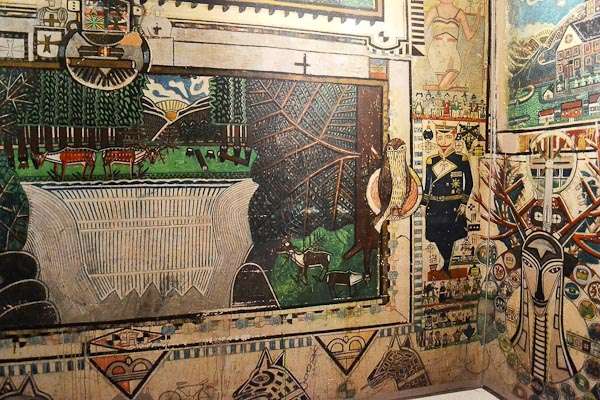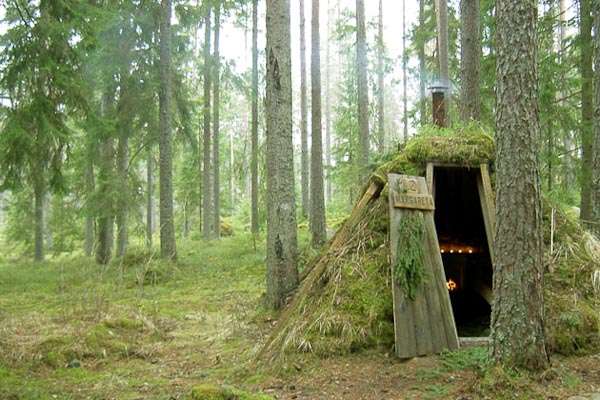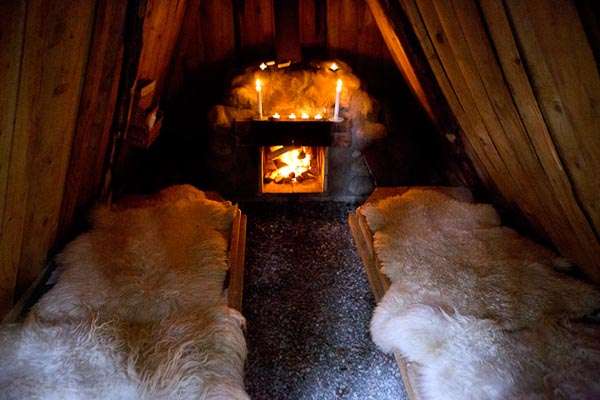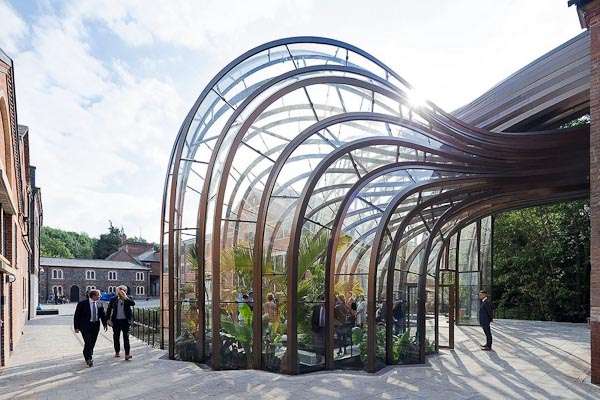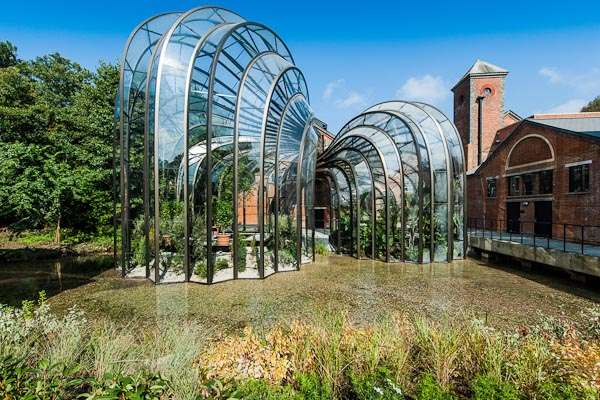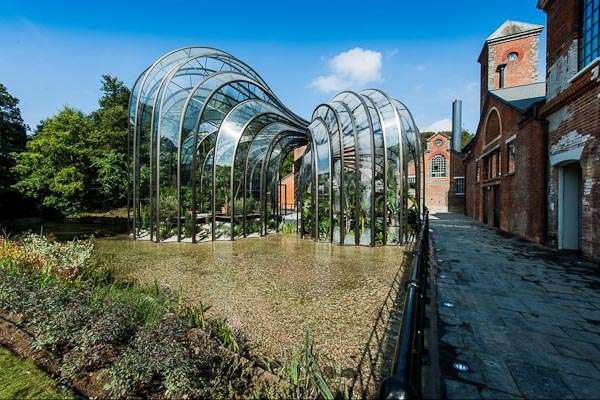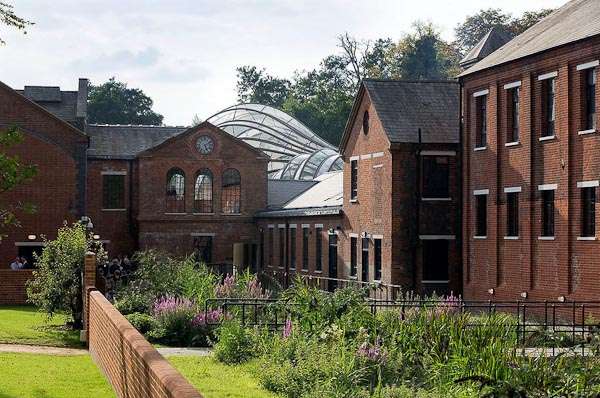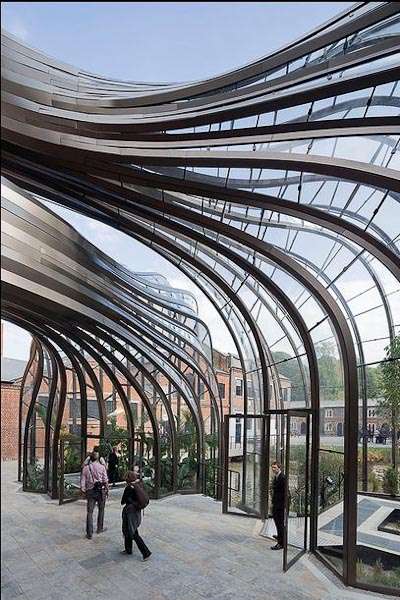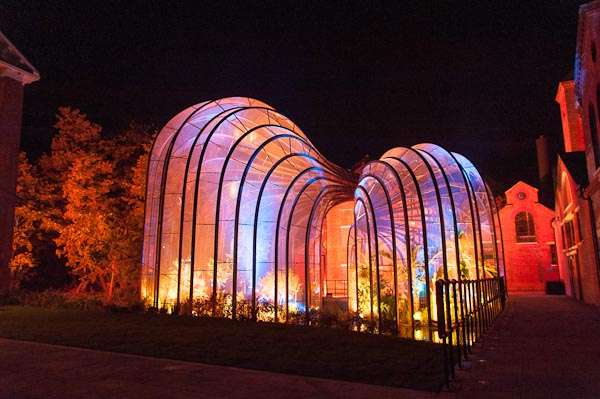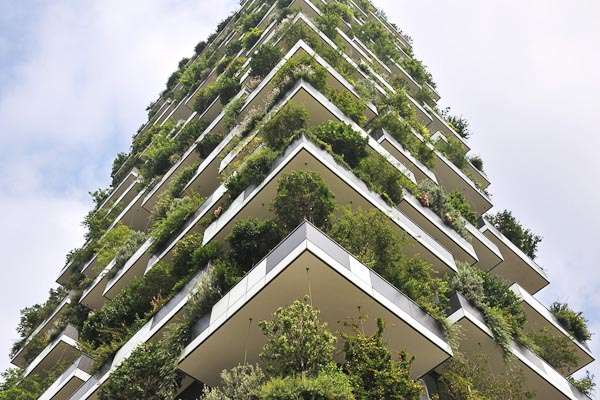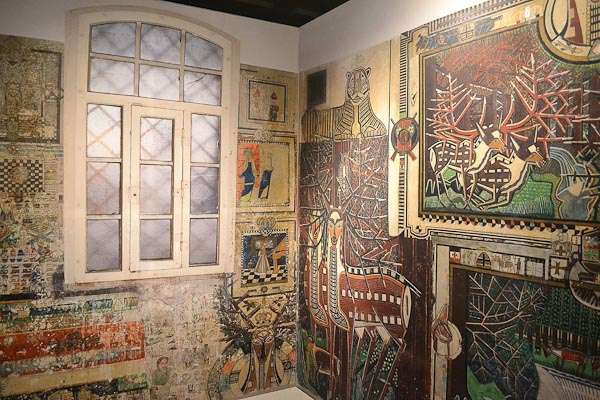
The artwork covering the walls of this psychiatric hospital cell is that of Julius Klingebiel (1904-1965). The former German army mechanic was arrested in 1939 for killing his step son and shortly after got diagnosed with paranoid schizophrenia and was hospitalized.
Soon he began decorating the cell where he stayed, at first using a paste made from toothpaste, coal, wood and stone. When the nursing staff noticed the calming effect he got from painting they supplied him with proper paint and a brush which he used to cover all the walls of cell #117. The paintings featured animals, (military) people, ships, heraldic motives, national-socialist topics and roman-catholic imagery.
After his death in 1965 the hospital preserved his cell as it was. Only a handful of people knew about it until the artworks were published in a book as part of a research project in 2013 and the cell is now protected by law as a cultural monument.
